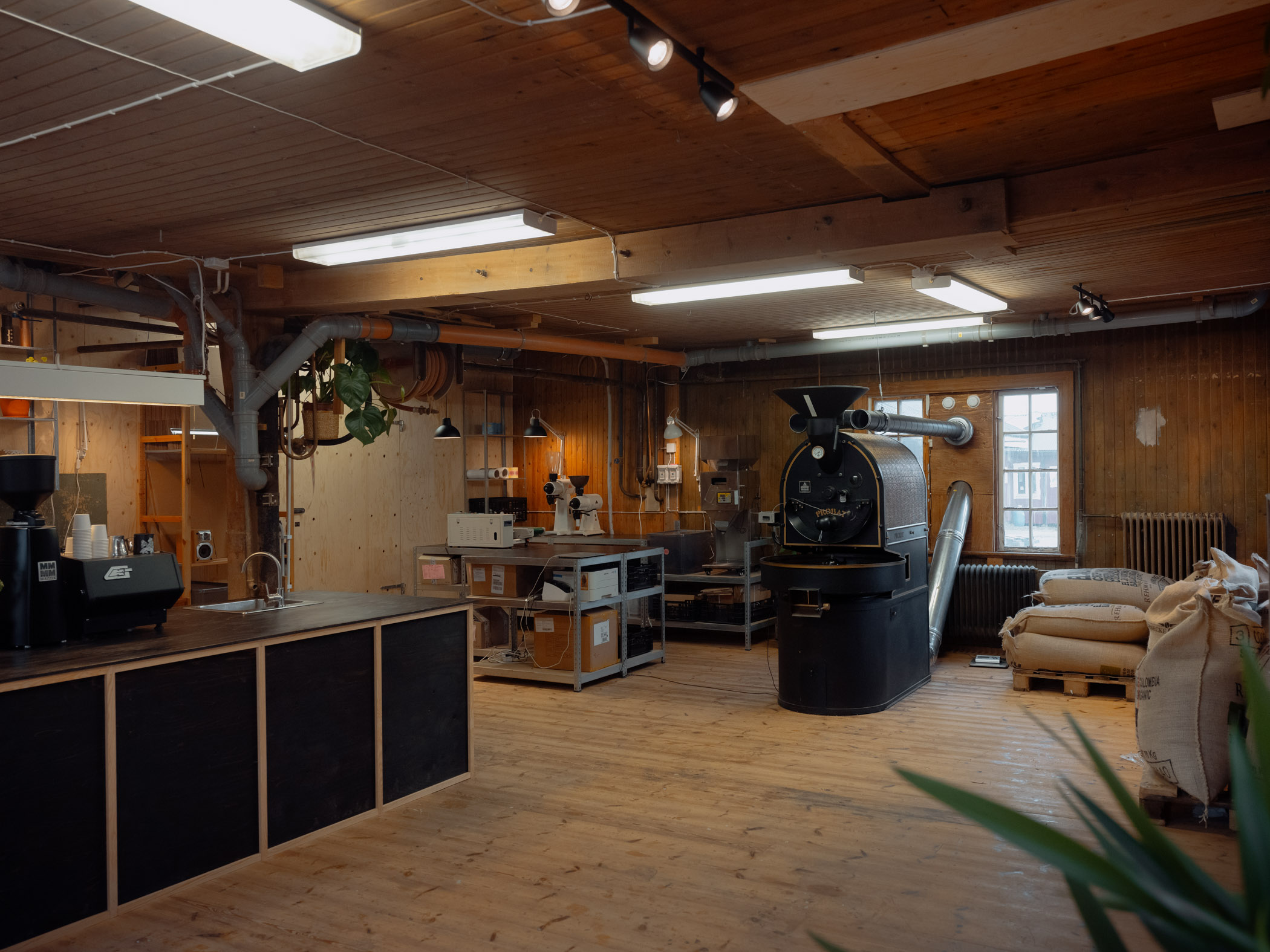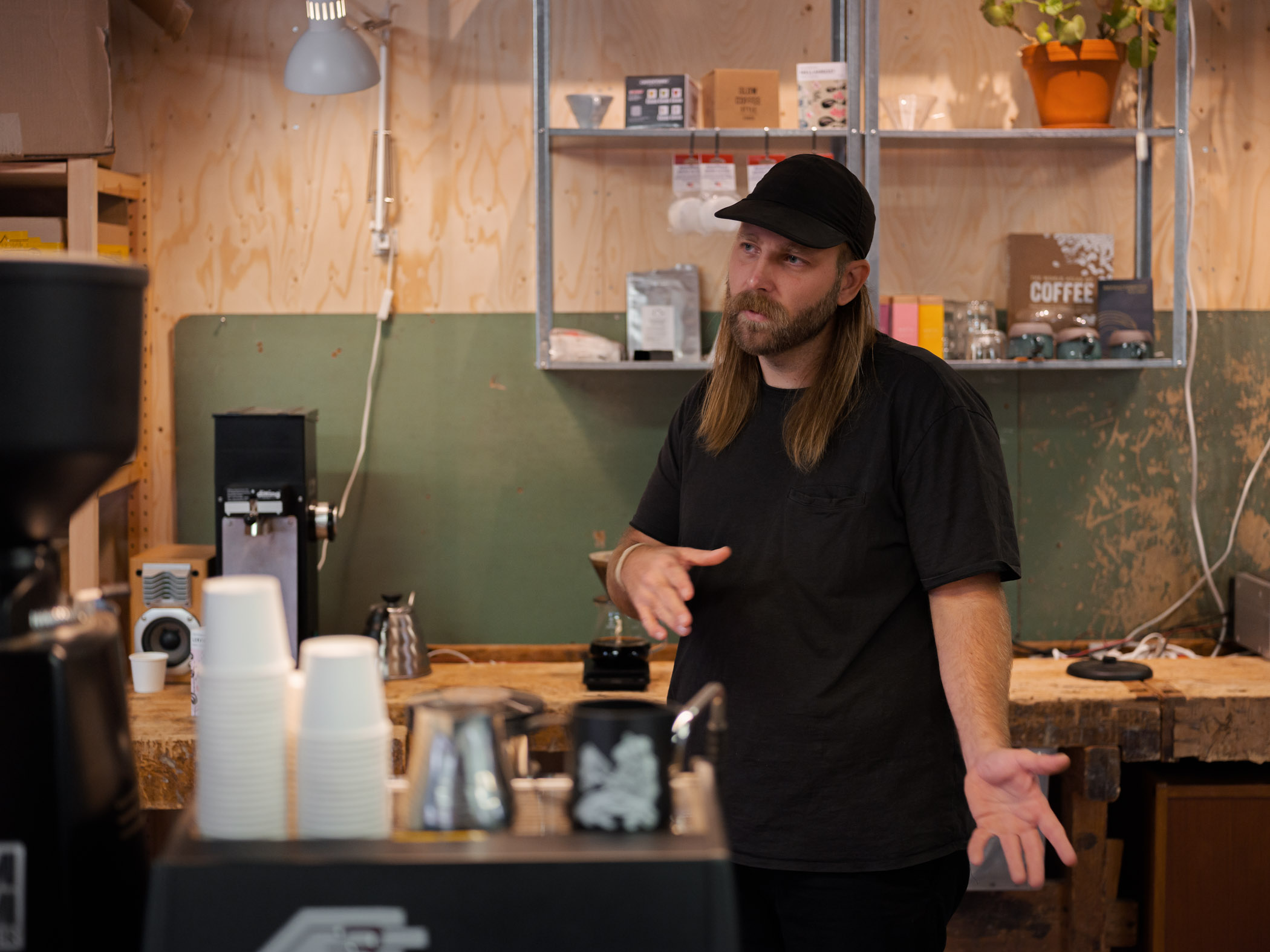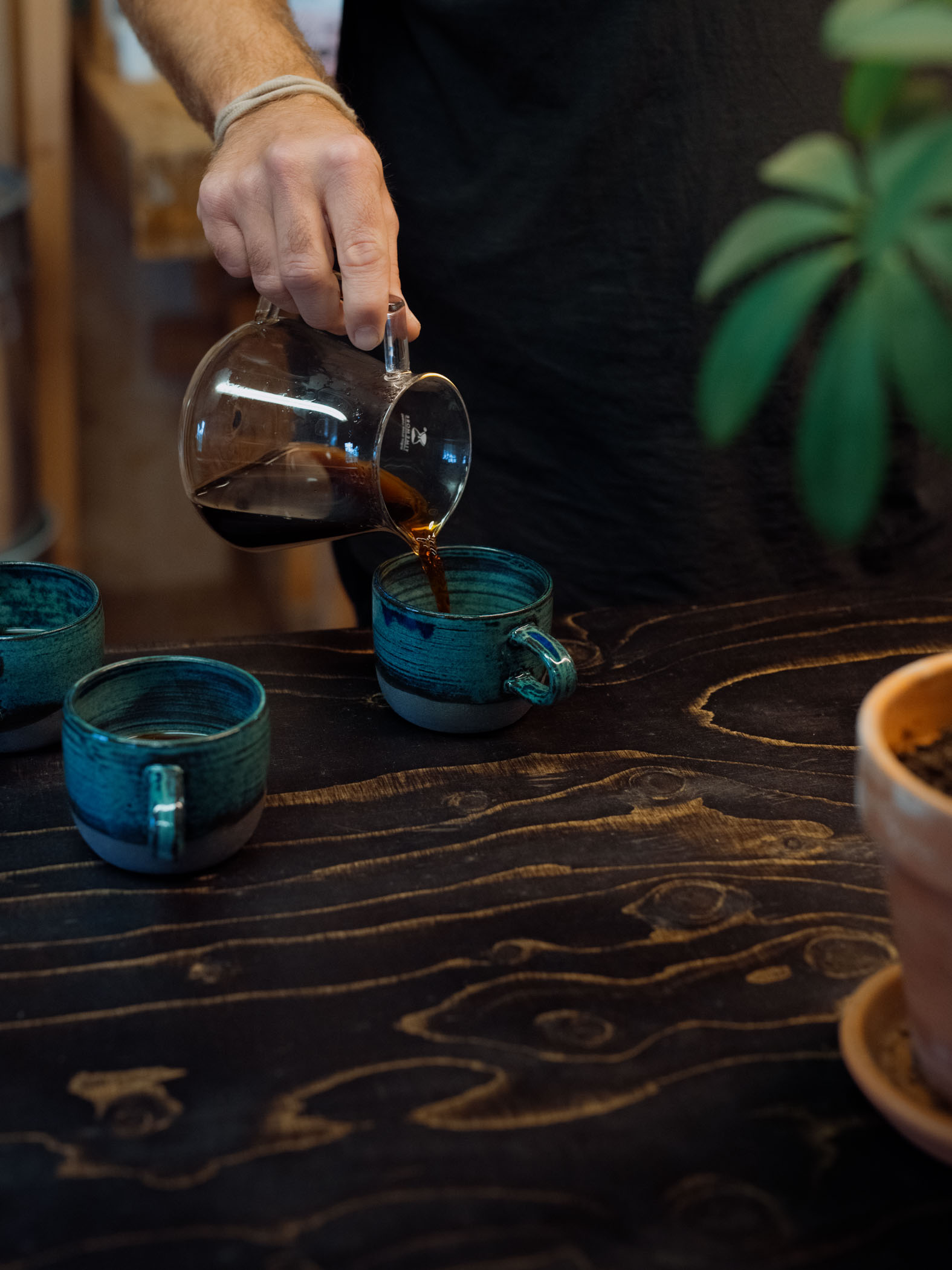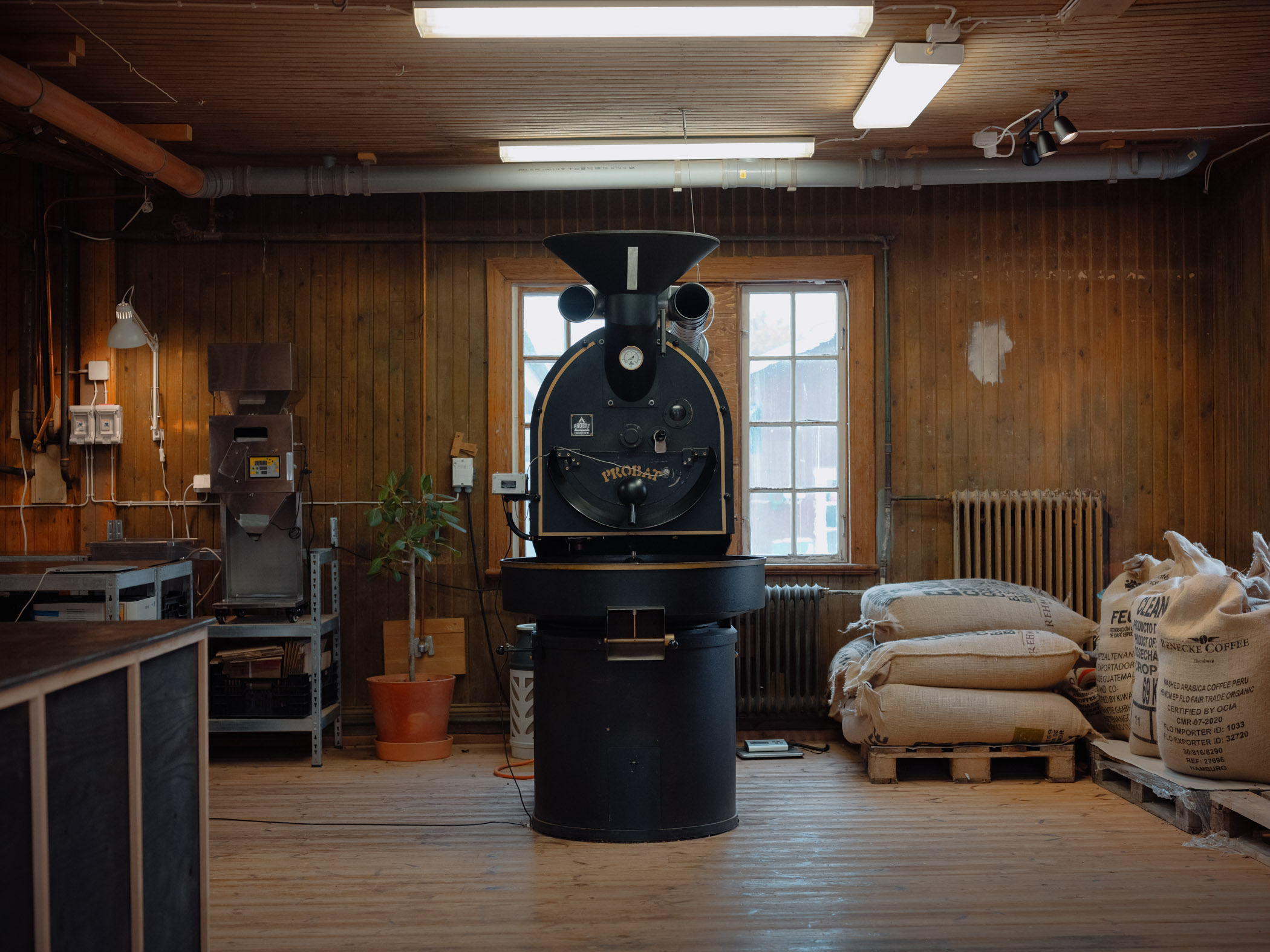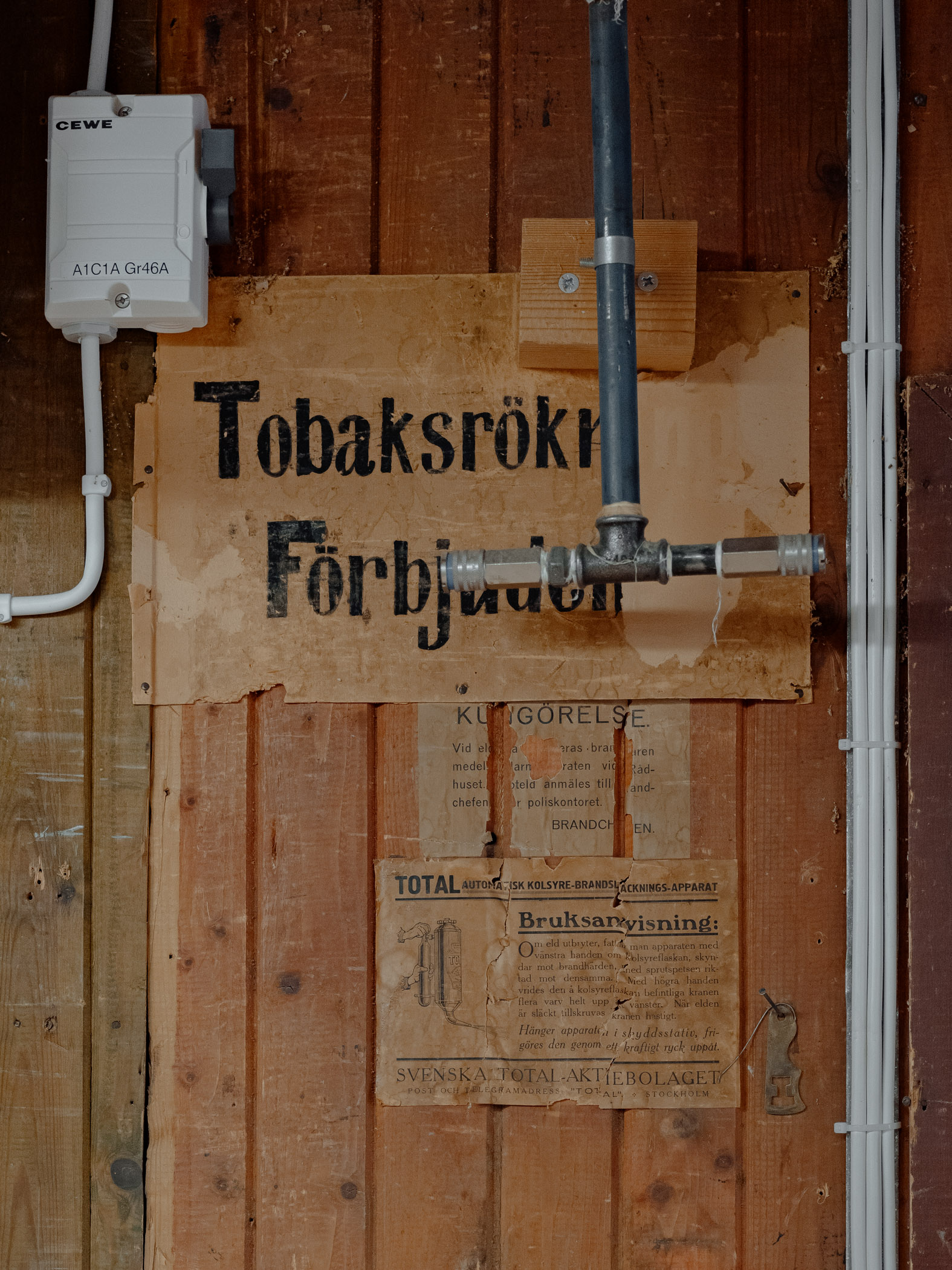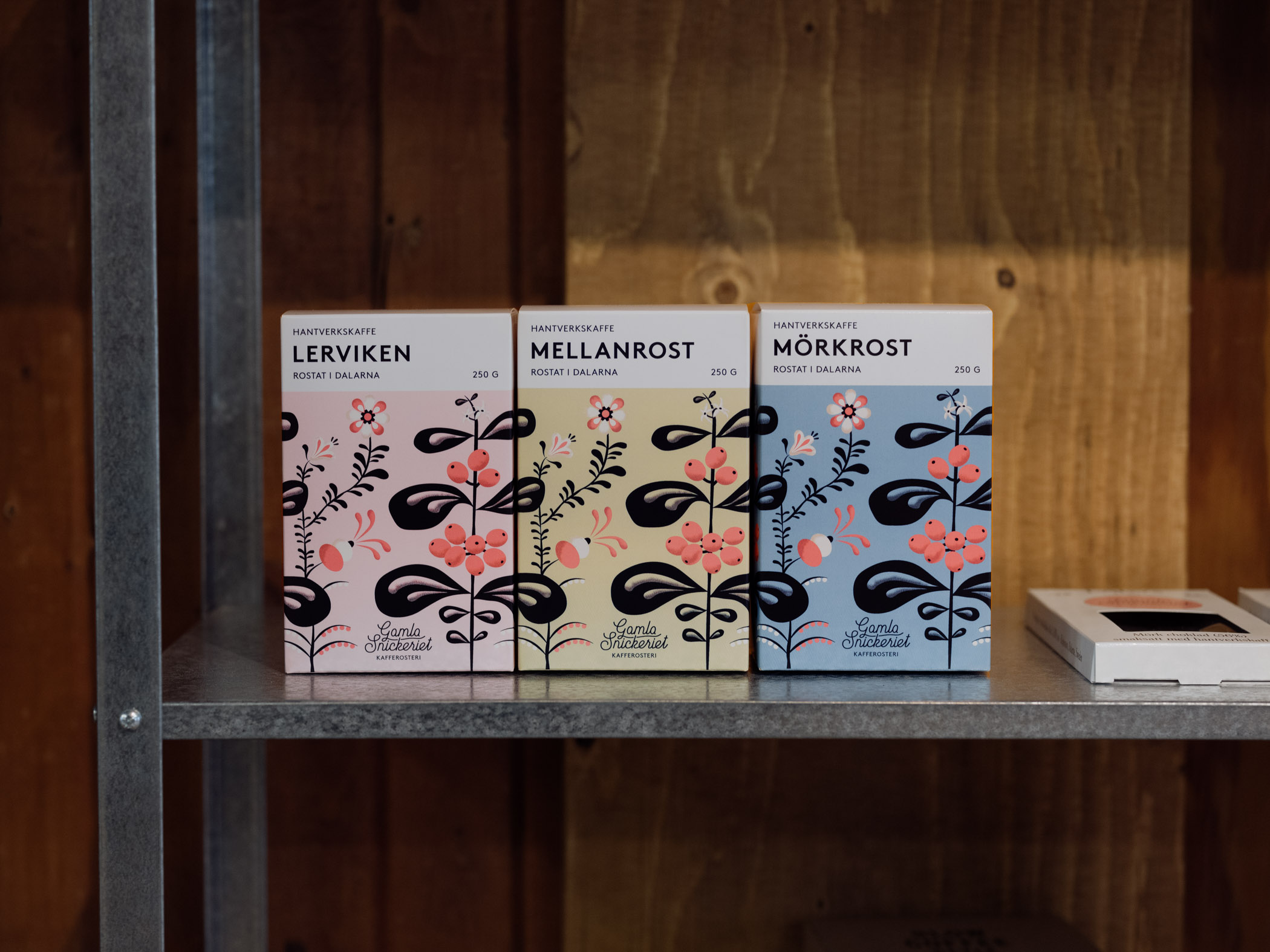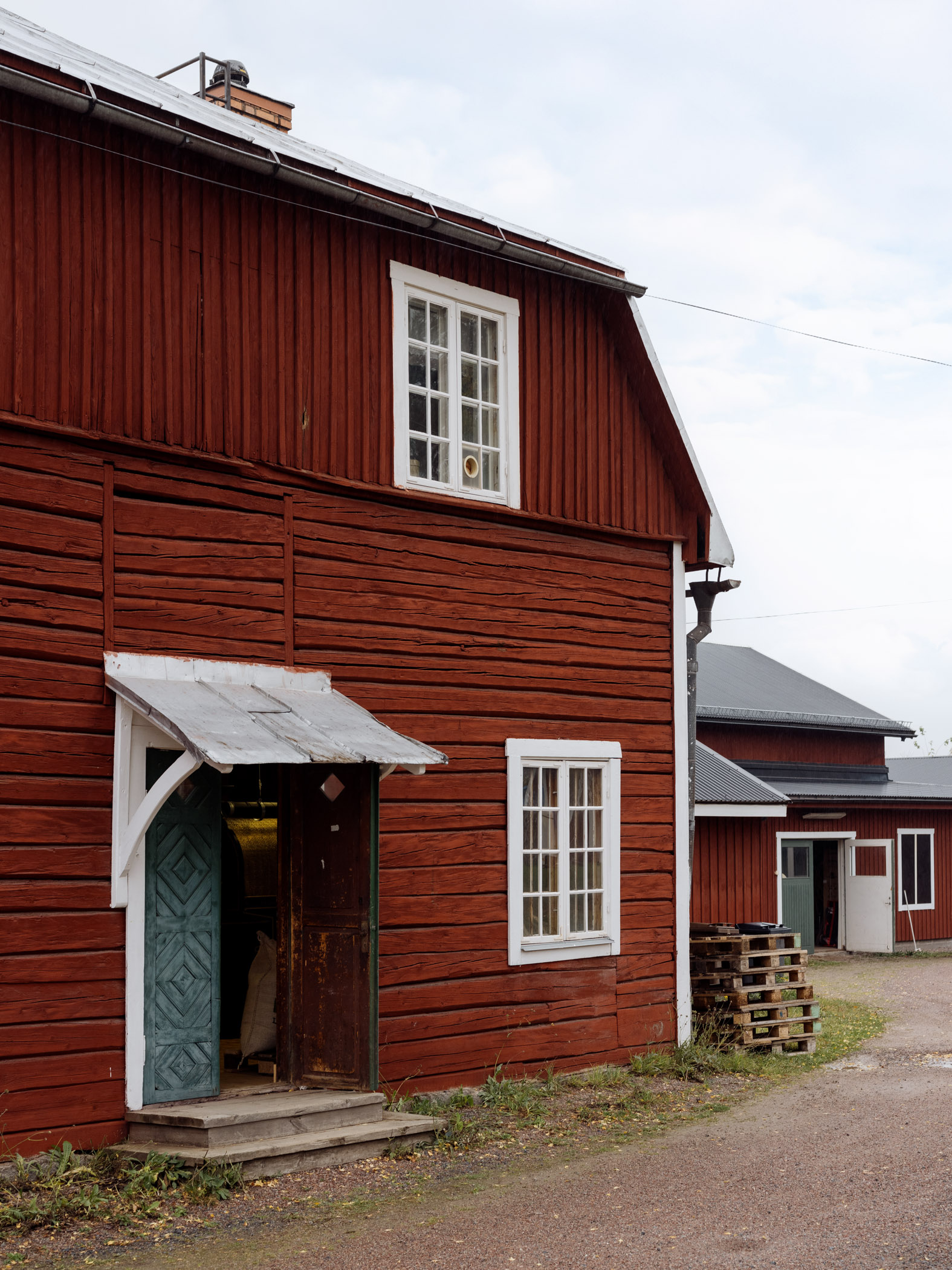DE | EN
Waking up a little shivery, I check my phone: 3° Celsius, 6:54, October 10th. A quick glance outside the window, fog between tall pine trees, a silent army somewhere in the middle of Sweden.
Still snuggled into our sleeping bags, we put the water kettle on and prepare some warm and sweet porridge to wake up body and mind. A roughly three hour drive awaits us, before we’ll meet Joachim Segerstedt in the small town of Säter, 200km northeast of Stockholm.
A few minutes after 11 we reach a classic red wooden house with a green door and before we even stop, a longhaired guy comes walking towards us, smiling and waving – what a warm welcome. And what a perfect timing for a second coffee!
After living in Stockholm and working as a barista for many years, Joachim re-invented „Gamla Snickeriet“ in this village of 4.700 people, when his girlfriend got pregnant and they were looking for a nice and more chilled place to live and raise their kids. Joachims parents used to have a summer house here and he still remembers many of those seemingly endless childhood summers, that he had spent in this area.
Moving here was a change of pace, but also a change of priorities and maybe even a change of mindset – especially when it comes to the definition of what good coffee should really be all about.
After almost three weeks in Sweden, we have realised that there isn’t really a specialty coffee culture throughout the country. Maybe in Stockholm and Gothenburg, but not in the countryside. Where „European Coffee Trip“ lists 60 cafés for Berlin alone, it finds 26 for the whole of Sweden…
While brewing one of his own roasts for us, Joachim starts to tell his personal coffee tale, a story about providing joy and pleasure in the day-to-day life of a community.
Ten years ago Joachim visited friends in Berlin, when Kreuzberg was still more punkrock and specialty coffee hadn’t (fully) arrived yet. On just another Sunday he stumbled into „Bonanza“, which was a small roastery with no seating back then, and ordered a cappuccino – and that changed everything:
„I never had a coffee like that before. I thought „Well, okay, this is like… next level!“. I mean, coffee in Stockholm was very shitty, but coffee in Berlin was even shittier! It was like: Now I got my calling, this is it! Now I know what I wanna do! And I thought „I should open a shop like this in Stockholm!““
And so he did. At „Mogen & Grus“ he served the best cappuccino Stockholm had ever seen, brewed with beans from Bonanza Coffee Roasters.
It was a very small space, 20sqm on a backstreet in Södermalm and he focused completely on the coffee: „A couple croissants maybe, otherwise it was stricktly coffee. Super bad business idea…“ he remembers laughing.
Even back then this district, nowadays well known as „Hipster-Island of Stockholm“, was pretty expensive and earning 1000€ rent only with a couple cappuccini a financial trick, Joachim couldn’t quite get behind. He worked crazy hours, soon added light lunch options – and the people loved it! „Mogen & Grus“ became well known for its chilled vibe and the feeling that „one couldn’t tell who was working there or just hanging out“ as a customer described it.
One day Joachim was invited by one of his regular customers, to his coffee roastery outside Stockholm. And that became another day with profound consequences!
„I started going there and roasting coffee by night, serving cappuccini by day. I wanted to learn more about the whole process and it was very satisfying. Finding green coffee, roast it the way you want and then have it in your own shop. Back then I wanted to make people discover what coffee can be. At some point we had like two Espresso and 8 Filter options! It was ridiculous!“
While we sip a smooth light roast from Guatemala, Joachims story takes an unexpected turn: After 4 years working non-stop in his shop, a doctors visit ended it all in a whim, when Joachim was told, that he needed heart surgery! As the sole owner of a „matter of passion“ shop, he simply couldn’t afford to employ a full time deputy – and so he had to close „Mogen & Grus“ from one day to the next.
Once he had recovered from surgery, he didn’t want to return to „leftover-sandwiches for dinner“ again. So instead of searching for another place to rent, he started to work full-time at the roastery instead.
Steady income, fixed hours, less sleepless nights… a good change for a while. And roasting every day now, he also learned different styles, from light roasted Natural to Robusta blends for Italian Espresso.
„You don’t have to love everything, but it’s good to know everything“
With many lessons learned and a Diedrich 2.5 roaster bought, he moved to Säter with his girlfriend in 2017. At the beginning he was roasting in his garage, strictly high-end coffees and super light roasts for his clients in Berlin and internationally. Until one day he realised, that what he actually wanted had changed over the years. And he asked himself what his role could be in stepping up the coffee game of this region. Since then his mission became, to simply show people, who were used to super dark – or sometimes burned – coffee, better coffee! Not by telling them they were doing it wrong, but by using his knowledge to roast a better version of the coffee they like.
„That’s my idea of being a super local roaster and not trying to convince people, that you have to drink light roast coffee. But rather like: „Coffee can be better than what you are drinking now!““
Finally in spring 2019 Joachim got the opportunity to rent this lovely space, the old joinery of Säter, in Swedish: „Gamla Snickeriet“.
And it is in these old wooden walls, where he is now roasting his version of a dark roast, a medium roast and a lighter roast (named after his summer house: „Lerviken“). He only roasts certified organic coffees and he isn’t using super special or „weird“ coffees anymore, but those, with which he can please the local community.
And every now and then he is doing open days at the roastery, to show the local people how raw green coffee beans actually look like and how the roasting process works.
„Some people still think, that I buy roasted coffee from Italy and then grind it here, put it in my bags and sell it! And at that level you don’t go „Have you tried a light brew from El Salvador? It tastes like melon and papaya!“ – People would think I had put a papaya in it! That’s also the reason why I don’t have taste descriptions on my coffee.
So yes, it is a super long process, that you have to start somewhere and that’s why I almost excluded light roasted coffee for now. I try to meet them at their end of the scale. So not nerdy at all, I just show people the process.“
9 out of 10 cafés, that use his coffees, are serving the dark roast. People going to their favorite café, having their favorite baked treat, accompanied by a cup of his coffee, who then say „This is really nice!“ and feel that their overall experience went one step up: That’s his aim today.
Apart from that Joachim has one criteria for the coffees he is roasting: He wants to enjoy three cups of it in the morning himself. Nothing too intense, where more than one cup would just be too much; nothing super acidic, that gets the stomach into trouble. Something clean and crisp with a lovely sweetness for a nice everyday morning.
And maybe his everyday morning coffee becomes a Sunday morning treat coffee for some people, who are still used to „Skånerost“ coffee* on a heated plate. And of course he can provide all the high-end secrets in terms of grinder and water quality and all the bits and pieces, in case someone wants to follow the „specialty road“ a bit further.
With half a lifetime of coffee knowledge in the books, who knows what lies ahead for this passionate Swede?
„Nothing you do has to last forever, you know? You can actually do it for a while and if you don’t like it, you can do something else!“
Until then, find Joachim and his „Gamla Snickeriet“ here: https://gamlasnickeriet.se
*Skånerost is a super dark roasted coffee with a long tradition in Sweden. And it is so popular, that even Nescafé offers capsules with that taste.
Photography
Constantin Gerlach, Laura Droße
text
Laura Droße




